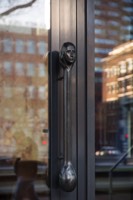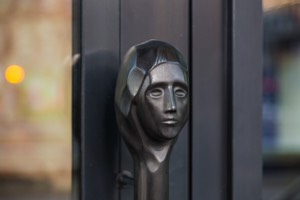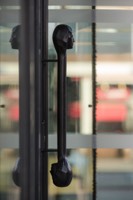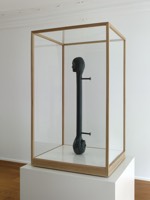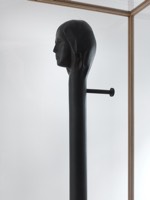Portrait of a Recipient as a Door Handle, After a Drawing Produced by an Anonymous Philanthropist
Bronze, dark grey patina
2014

Installation at the entrance to Rabobank, Rotterdam
Portrait of a Recipient as a Door Handle, After a Drawing Produced by an Anonymous Philanthropist takes the form of a door handle that is intended to be affixed, as standard, to the entrances of various competing banks in central Rotterdam. The first handles were installed at the Blaak 333 branch of Rabobank in February 2014. Texts by Marina Vishmidt & Tirdad Zolghadr: 'Open' Platform for Art, Culture & the Public Domain
While the work was produced through a commission from Sculpture International Rotterdam, its relationship to third parties who were closely involved in the production of the work and its placement was characteristically unsolicited. A public institution is literally funding a work on the threshold of a company’s private property since the entrances of banks mark a pronounced boundary between public and private interests.
The commissioned drawing referred to in the title is by an unnamed philanthropist who was attempting to capture the facial expression of a recipient, of the benefactor’s altruism, who has just managed to overcome the fear of being exploited. This drawing was then made three-dimensional as a doubled motif in the sculpture – looking both inwards and outwards. The work’s first rendition, in 2010, was as an oversized bronze prototype, at a scale of 4:3, displayed in a vitrine. With this particular relationship between scale, materials and manner of display there’s a blurring in the relationship between a ‘model’ and a ‘sculpture’, a speculative object and an artefact.
Both the original drawing and the identity of the philanthropist should remain concealed as the sculpture represents a public embodiment of an undisclosed act. If, at an entrance to a bank, we consider the flow of capital through the city, we can think of a philanthropist as having a dual relationship to this flow – both accumulating capital, and, at the same time, redirecting it back into the public domain. When we visit a bank, we might contemplate the contested definition of “philanthropy” and how it operates between acts of mercy or justice, between providing solace to the less fortunate or promoting the development and reform of social institutions. As our hands grasp the door handle, we might also consider the varying responsibilities that characterise public and private acts of benevolence and the related ethical implications. Or, on deciding to either pull the handle towards us or push it away, we may simply be remembering how much or how little there is to withdraw from our accounts.
Portrait of a Recipient as a Door Handle, After a Drawing Produced by an Anonymous Philanthropist, Bronze Maquette, Scale 3:2
Bronze, dark grey patina. 80 × 135 × 70 cm.
2010
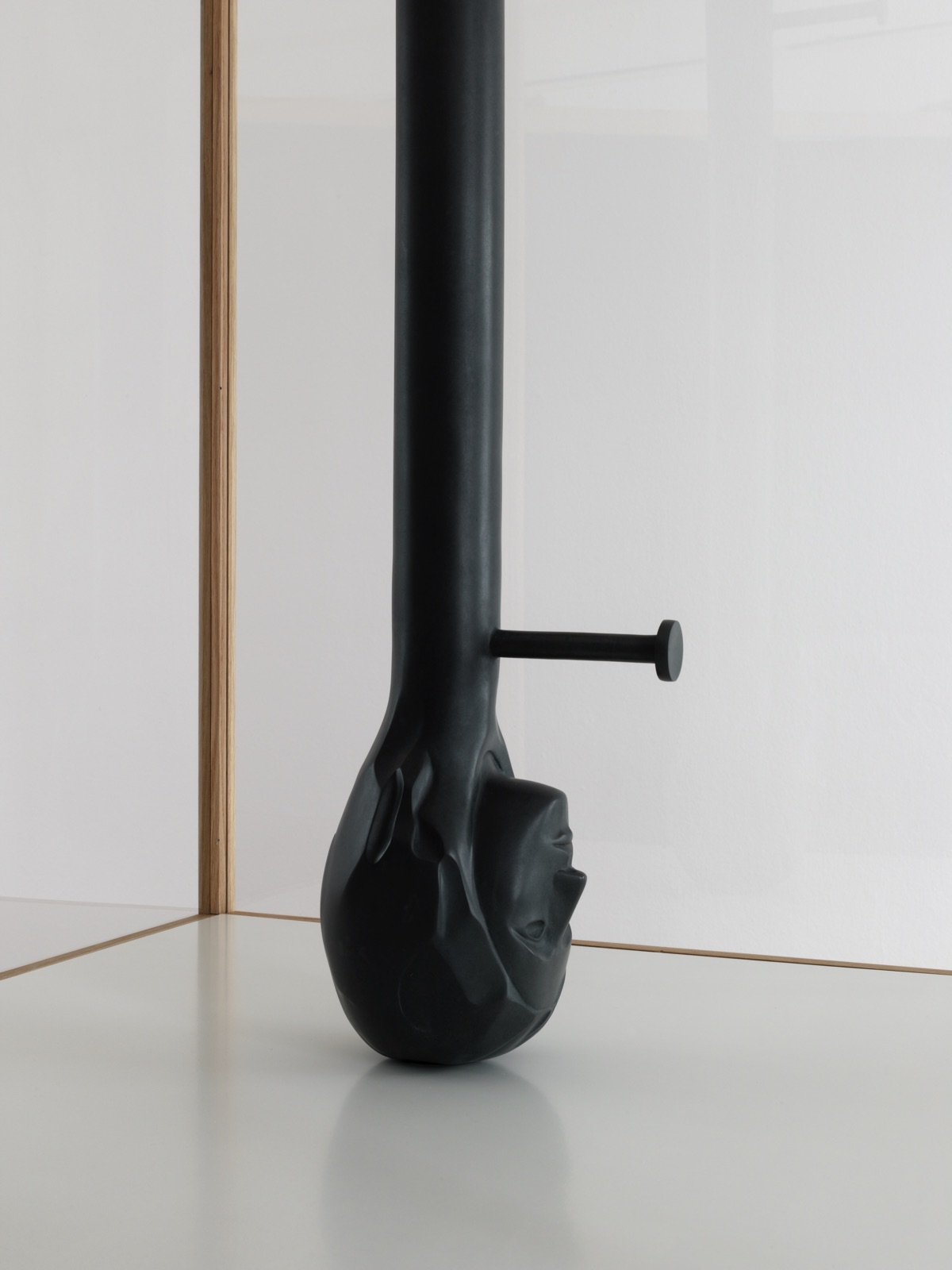
Portrait of a Recipient as a Door Handle, After a Drawing Produced by an Anonymous Philanthropist, Bronze Maquette, Scale 3:2. Installation view: Marres, Maastricht, 2010
Proposal – in oak vitrine – for door handle to be affixed as standard to the entrances of a range of competing high- street banks in Rotterdam. The figure looking both inwards and outwards is the recipient of benevolence, having overcome the fear of exploitation – as portrayed by an anonymous philanthropist.
Exhibitions:
The Indirect exchange of uncertain Value, Fettes College (Collective Gallery offsite project), Edinburgh; The Cell That Doesn't Believe in the Mind That it's Part Of, Marres, Maastricht, 2010
Review:
Micro-activism, Dominic Ruyters, Metropolis M, 27.08.2010
